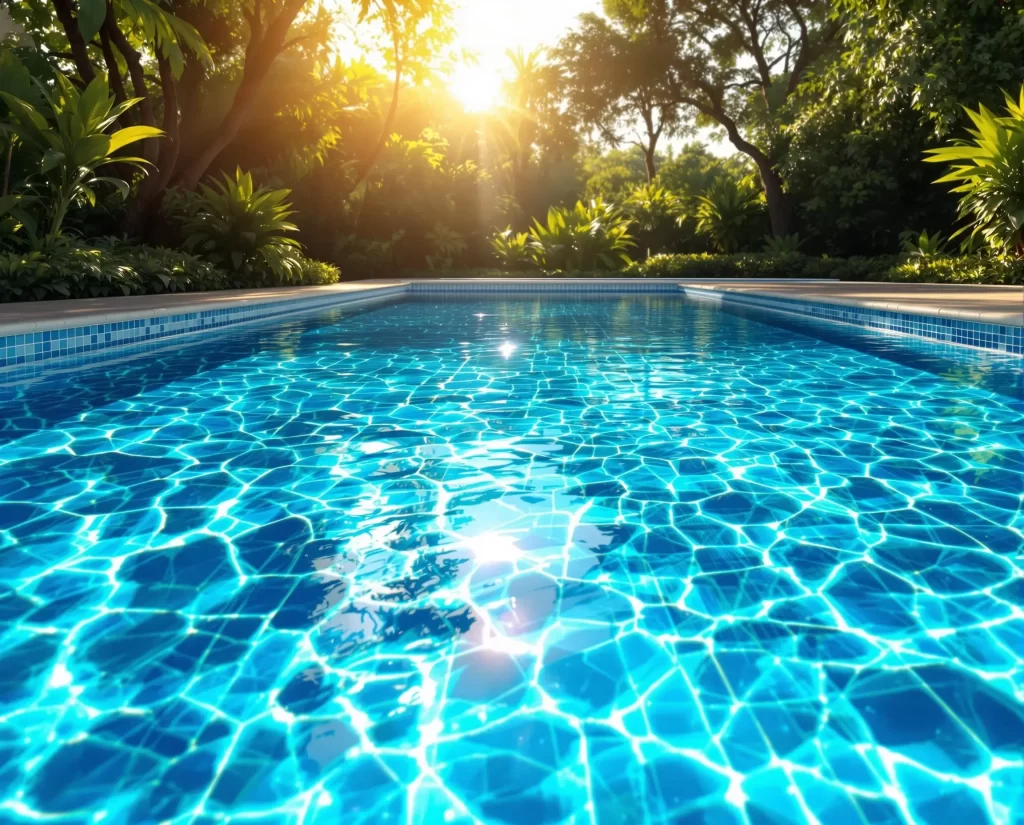INTRO
Welcome to my complete guide on how to maintain a saltwater pool! As a proud pool owner, it’s crucial for me to keep my aquatic oasis sparkling clean and enjoyable. Whether I’m soaking up the sun or hosting a backyard gathering, a properly maintained saltwater pool ensures I have the perfect escape right at home. In this article, I'll share practical tips and best practices to help me manage my saltwater pool effectively.
Understanding Saltwater Pools
Maintaining a saltwater pool can be slightly different from caring for traditional chlorine pools.
What is a Saltwater Pool?
A saltwater pool uses salt to generate chlorine through a process called electrolysis, providing a more pleasant swimming experience.
- Lower chlorine levels
- Softer water feel
- Reduced maintenance costs over time
Benefits of a Saltwater Pool
Saltwater pools have many advantages that appeal to me as a pool owner:
- Gentler on Skin and Eyes: Less harsh than traditional chlorine pools.
- Cost-Effective: Saves money on chemical purchases in the long run.
- Self-Regulating Chlorine Levels: Chlorine is generated automatically, reducing my workload.
Essential Maintenance Tasks
To keep my saltwater pool in top condition, I must routinely perform several key maintenance tasks.
Regular Water Testing
I test my pool water frequently to ensure chemical balance and clarity.
- Ideal pH level: 7.4 to 7.6
- Salt level: 2700 to 3400 ppm
- Stabilizer levels: 30 to 50 ppm
How to Test Water
Testing water can be as simple as using a test kit or strips.
- Follow manufacturer instructions
- Regularly check testing tools to ensure accuracy
Cleaning Your Saltwater Pool
An essential part of pool maintenance involves regular cleaning.
Skimming and Vacuuming
I make it a habit to skim the surface of my pool daily and vacuum at least once a week.
- Use a leaf skimmer to remove debris
- Vacuum to eliminate dirt and sediment
Brushing Pool Walls and Tiles
Brushing my pool walls and tiles can prevent algae buildup and create a pleasant swimming environment.
- Use a nylon brush for best results
- Focus on corners and steps where debris collects
Managing Salt Cell Maintenance
The salt cell is a crucial component of my saltwater pool system, so I must care for it properly.
Cleaning the Salt Cell
I ensure that my salt cell is free of buildup by cleaning it every three months.
- Disconnect power and water supply
- Gently scrub plates with a vinegar solution
Monitoring Chlorine Production
Keeping an eye on chlorine production helps maintain water quality.
Signs of a Failing Salt Cell
There are symptoms to look out for:
- Low chlorine levels
- Increased salt consumption
- Error messages from the control panel
The Role of Water Temperature
Water temperature impacts my pool’s overall chemistry, so I need to monitor it closely.
Ideal Temperature Range
I strive to keep my pool’s water temperature between 78°F and 82°F for optimal comfort.
Water Levels Management
Proper water levels in my pool is vital for effective filtration and operation.
How to Maintain Water Levels
I keep a close watch on my pool’s water level during dry spells.
- Use a garden hose to add water
- Avoid overfilling, which can disrupt the skimming process
DIY vs. Professional Services
While I enjoy maintaining my pool, I know when to call in the experts.
Risks of DIY Maintenance
There are potential risks associated with DIY maintenance, including:
- Over-treatment or under-treatment of chemicals
- Equipment malfunction leading to costly repairs
Benefits of Hiring Professionals
By hiring professionals, I ensure quality work and peace of mind.
- Expertise in complex repairs and maintenance
- Saves me time and effort
Testimonials
“I was amazed by how fresh and clean my saltwater pool felt after the service crew came through! Definitely worth the investment.” — Sarah L., Knoxville, TN
“The team was punctual, professional, and made maintaining my pool so much easier. I couldn’t be happier!” — Mark T., Knoxville, TN
“I never realized how much I needed professional help until I hired these guys. They really know their stuff!” — Lisa R., Knoxville, TN
Did You Know?
Did you know that saltwater pools still require regular monitoring of chlorine levels, even though they generate their own? This ensures a consistent balance for optimal water quality!
TL;DR Summary
- Regular testing of water chemistry is vital.
- Clean my salt cell every three months for efficient operation.
- Professional help can save time and improve maintenance quality.
FAQs
How often should I test my saltwater pool water?
I recommend testing the water at least once a week during the swimming season to ensure proper balance. This helps avoid potential problems before they become serious.
What’s the ideal salt level for my pool?
For my saltwater pool, the ideal salt level is usually between 2700 and 3400 parts per million (ppm). Regular testing will help me maintain this range effectively.
Do I still need to add chlorine to a saltwater pool?
Even though a saltwater pool generates chlorine, I should occasionally add stabilizer and shock treatments, especially after heavy use or rainstorms, to maintain water quality.
How can I prevent algae growth in my saltwater pool?
I can prevent algae growth by regularly brushing my pool surfaces, maintaining balanced water chemistry, and ensuring good circulation with my filtering system.
What signs indicate that I need professional pool service?
If I notice cloudy water, persistent algae growth, or mechanical issues, it’s a great indication that I should consult with a professional pool service for a thorough check-up and resolution.





